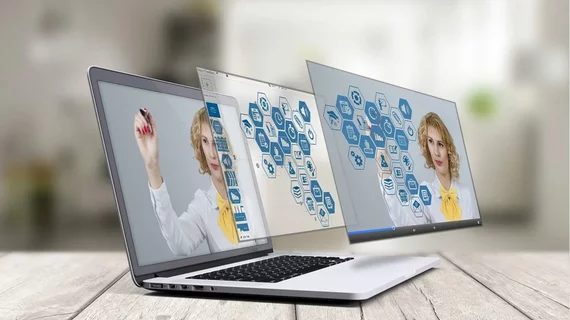Anonymous survey responses reveal how residents really feel about virtual learning
Although shifting to virtual learning was a necessary move during the height of COVID, many radiology residents feel that a lack of in-person education has negatively impacted them.
According to responses to the American Alliance of Academic Chief Residents (A3CR2) 2023 survey, up to 74% of radiology residents feel that their education has been negatively impacted by faculty working from home. The survey results were shared this week at the annual meeting of the Association of University Radiologists being held in Austin, Texas.
When asked whether residents perceived an increase in the degree to which faculty work from home, 45% of respondents reported witnessing “a large increase,” while 37% acknowledged small increases; 74% of respondents felt that staff working from home has negatively impacted their education, while 22% reported feeling no impact.
These results further fuel the debate on whether virtual education initiatives are as effective as the in-person alternative. Numerous studies on the topic of virtual residency during COVID have been published in the last two years, but conclusions derived from attempts to understand the impact of virtual education vary widely. Some studies have reported that residents found virtual learning effective, while others have suggested that virtual initiatives left them feeling less confident in their knowledge and skills.
The debate is evident on social media as well; a recent Twitter post detailing a portion of the A3CR2 survey garnered a mixed bag of responses from other Twitter users who have been affected by virtual radiology residency.
“I have had several convos with rads since this presentation and agree that there are some folks who are actually very effective remote teachers. But given the fact that many also are not, this is a reflection of the composite reality,” said Joshua Nickerson, Neuroradiology Division Chief at Oregon Health and Science University, who made the original post with the survey results.
One response maintained that “there is no substitute for in-person learning,” while others voiced support for working from home, one user stating that remote teaching is possible, but requires “dedicated time, practice and willingness to make it work.”
Waleed Brinjikji, a neurointerventional radiologist at Mayo Clinic in Rochester, Minnesota, described working from home as “the biggest threat to radiology.”
“Results in radiology being commoditised as radiologists no longer have a “face” to their colleagues and administrators. The more invisible radiologists become, the less their perceived value will be,” Brinjikji tweeted.
While opinions on the topic are largely subjective, if anonymous responses of the survey are to be used to form conclusions, the residents have made their thoughts on the matter clear, as just 4% reported a positive impact from remote teaching.

